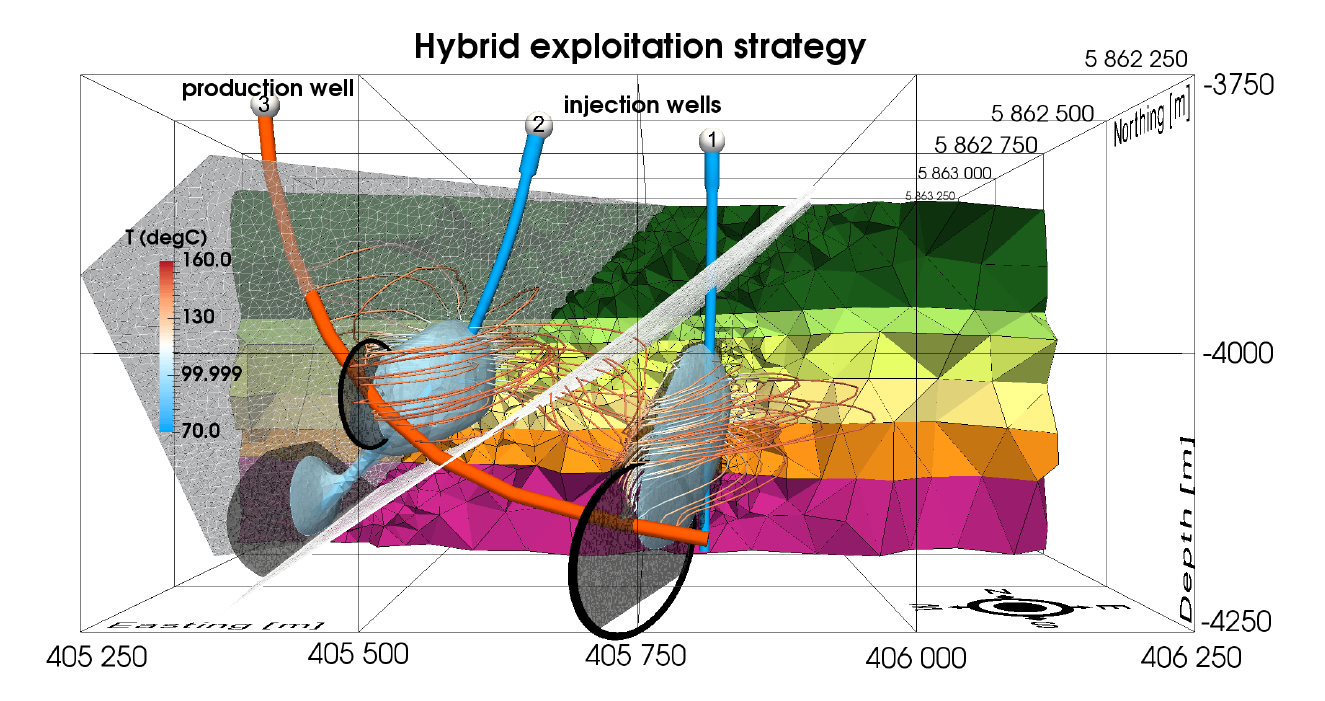GOLEM in a nutshell
GOLEM is a modelling platform for thermal-hydraulic-mechanical and non-reactive chemical processes in fractured and faulted porous media. GOLEM makes use of the flexible, object-oriented numerical framework MOOSE, which provides a high-level interface to state of the art nonlinear solver technology. In GOLEM, the governing equations of groundwater flow, heat and mass transport, and rock deformation are solved in a weak sense (by classical Newton–Raphson or by free Jacobian inexact Newton-Krylow schemes) on an underlying unstructured mesh. Non-linear feedback among the active processes are enforced by considering evolving fluid and rock properties depending on the thermo-hydro-mechanical state of the system and the local structure, i.e. degree of connectivity, of the fracture system. More information on the governing equations, their derivation and implementation together with a list of synthetic and real case applications can be found in Cacace and Jacquey (2017). Input files for all examples are available from a dedicated GitHub repository.

Proof of concept for EGS analysis - sustainability of induced fracture and exploitability of geothermal reservoirs.
GOLEM is based on the concept of object-orientation and provides a flexible modular structure with modules that can be easy extended by users. It also features geometric agnosticism and hybrid parallelism, with proved scalability on HPC architectures. The physics targeted in GOLEM includes saturated single phase fluid flow in fractured Porous Media (FPM), heat transfer (conduction and advection with or without internal buoyant flow) in FPM, non-reactive chemical transport (diffusion and dispersion), coupled to rock mechanics for the porous matrix (linear and non-linear elastic, plastic, visco-elastic, isotropic and anisotropic damage rheology) and fracture mechanics (elasto-plastic, frictional). Ongoing activities are towards integration of reactive chemistry via a dedicated interface to existing open source software.
Versions
Citing GOLEM
If you use GOLEM for your work please cite:

